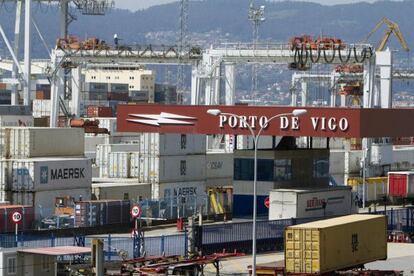Spanish exports gather pace in September and hit record levels
Imports also pick up indicating a possible revival in domestic demand after recession

Spanish exports continued to drive the incipient recovery in the domestic economy in September, while a pick-up in imports could signal that domestic demand is starting to improve, according to figures released Wednesday by the Economy Ministry.
The ministry said overseas shipments climbed 8.3 percent in the month despite the weakness of the recovery in Europe to 19.344 billion euros, while imports rose 4.7 percent to 21.931 billion. In real terms - that is, after factoring out a 2.8 percent fall in export prices - shipments grew 11.4 percent. Exports in August grew an annual 3.8 percent.
Referring to imports the ministry said: “The performance could signal an incipient recovery, particularly because of an increase in non-energy imports, which are closely linked to the economic cycle.”
The Spanish economy grew 0.1 percent on a quarterly basis in the period July-September ending nine quarters of declining output in what was the country’s longest recession in decades. The gain was accounted for a positive contribution of net trade – exports minus imports – with domestic demand remaining negative.
The Spanish export sector clearly outperformed the euro zone where overseas shipments increased by only 2.1 percent and by 3.6 percent in Germany. Exports to the EU and the euro zone climbed by an annual 12.4 and 13.9 percent respectively despite ongoing economic weakness in the two blocs.
As a result of the strength of exports, the trade deficit in the month narrowed 16.1 percent from a year earlier to 2.587 billion euros. Factoring out energy products, Spain posted a trade surplus of 954.2 million euros, an increase of 14.9 percent over a year earlier.
In the first nine months of the year, exports rose by 6.8 percent to a record for the period of 175.143 billion euros, while imports declined 2.3 percent to 186.150 billion. During the same period German exports declined 0.3 percent. Overall EU exports advanced only 1.0 percent.
The trade deficit in the period January-September narrowed by 58.6 percent from a year earlier to 11.007 billion euros, while the non-energy balance showed a surplus of 20.623 billion euros, more than double in the year-earlier period.
The ministry highlighted an increase of 9.4 percent in shipments to non-EU countries, with a rise of 56 percent in exports to South Africa, 23.5 percent to Algeria and 33.0 percent to Brazil. Exports to the EU rose by 5.3 percent and by 4.0 percent to the euro zone.
Exports were concentrated in the medium to medium-high technology sectors, with shipments of capital goods in the first nine months posting a rise of 15.3 percent and accounting for 20.8 percent of total exports. Exports of automobiles climbed 8.3 percent and made up 14.0 percent of total shipments.







































